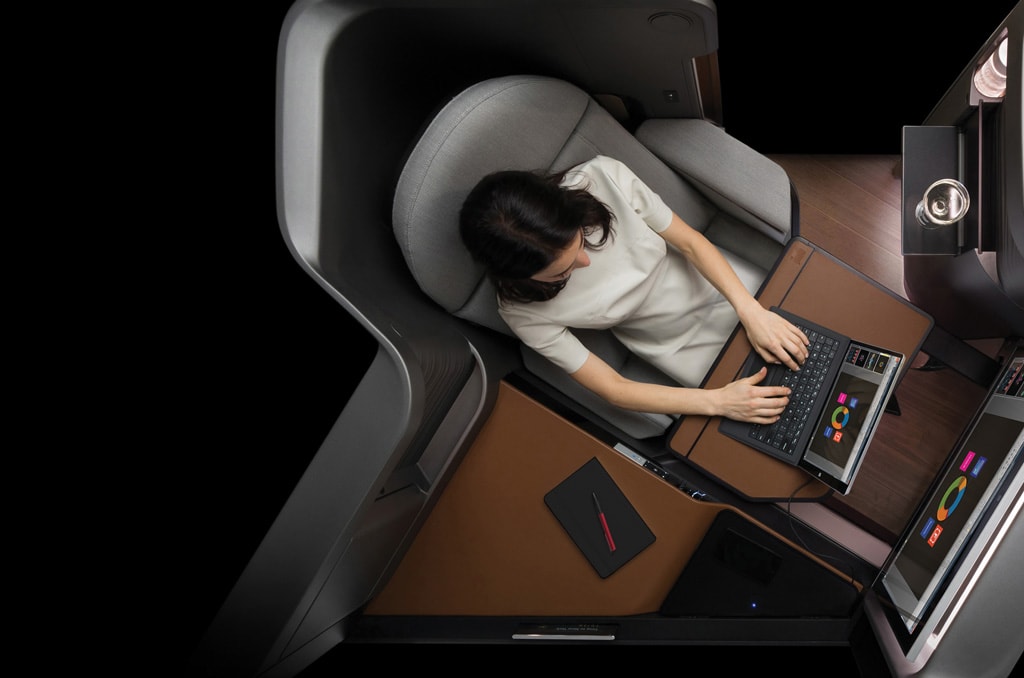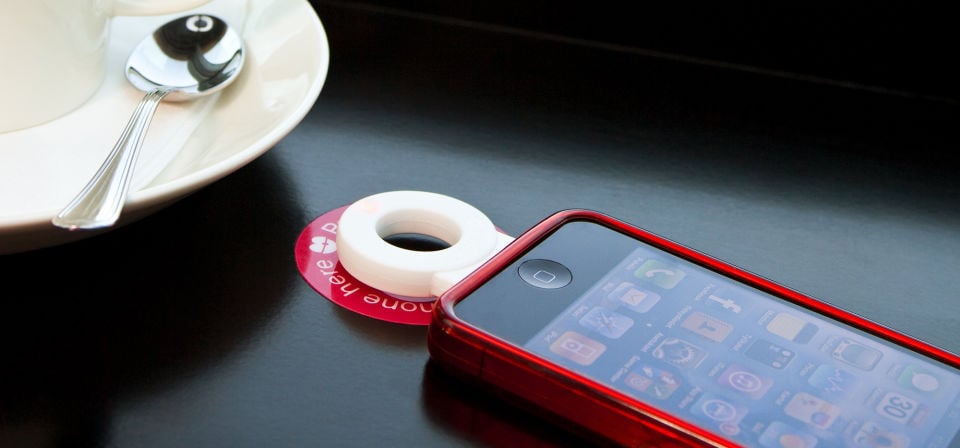Packing Power With Wireless Chargers
Share

APEX Insight: Cordless charging may soon be the standard, but the wireless revolution hasn’t taken to the skies just yet. As we charge toward a cable-free future, how will inductive powering rewire aircraft interiors and the passenger experience?
This story was originally published in the January/February issue of APEX Experience magazine.
Wireless charging technology is gradually making its way to aircraft in the form of tech-enabled seating and fold-down tables, promising to transform how passengers charge up during flight. At the Consumer Electronics Show this year, Panasonic Avionics displayed Waterfront, a business-class seat that offers the functionality, and at APEX EXPO 2015, Astronics and SmartTray International debuted a fold-down tray table with a charging feature.
Cordless charging may soon be the standard, but the wireless revolution hasn’t taken to the skies just yet. Until then, the majority of flyers will only encounter the devices at select airports. PowerKiss, a Finland-based company, partnered with SSP to offer wireless charging tables at the Helsinki-Vantaa Airport, in addition to 30 more European airports. Delta Air Lines installed Duracell Powermats pads in its business lounges, allowing travelers to charge low-power devices like cell phones and tablets.

In the consumer electronics market, just about everything packs a charge now. From wireless charging ties to backpacks to lamps, almost anything can be equipped to give your devices a boost – which means travelers could be packing their own power on flights and at airports, too.
As with most wireless technology, there’s the question of safety, but so far, wireless charging seems to be largely risk-free. QInside’s electromagnetic induction charging has been used in electronic toothbrushes for years without any known effects on human health, while uBeam’s energy transfer is no more harmful than an ultrasound.
How do wireless chargers work? Most must be charged before use; once powered, they electromagnetically transfer stored electricity to another device. Currently, the power transfer requires close proximity between charger and device and is quite slow, but the technology is rapidly improving. Lockheed Martin has already patented drones powered electrically from the ground via laser transfer, and uBeam has developed the means to send energy up to 15 feet using ultrasonic waves.
As wireless charging becomes commonplace, passengers are going to expect the same level of convenience during travel. Given the relative ease of application, it may be an arms race to see who and what will pack the most power.
To learn more about technology issues critical to the aviation industry, attend APEX TECH, taking place June 8-9 in Los Angeles. See the full agenda and register here.
CORRECTION: An earlier version of this story noted Delta Air Lines had WildCharge pads installed in its business lounges. These were installed in 2010, but have since been replaced by Duracell Powermats. This post was updated on May 25, 11:00 a.m. EST, thanks to a tip from @AirlineTrends.


